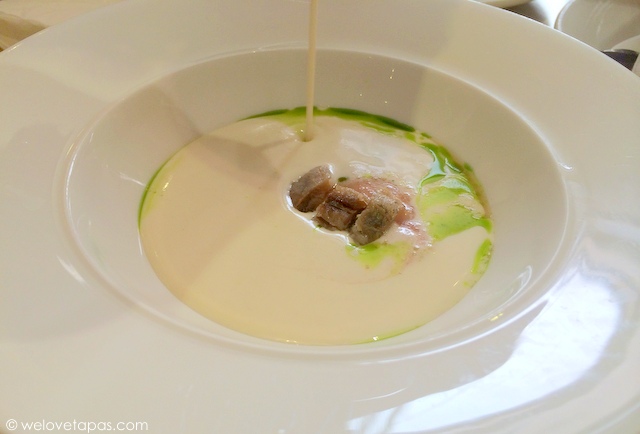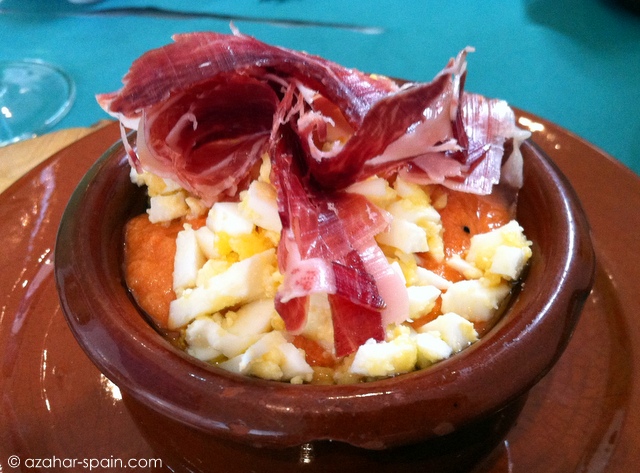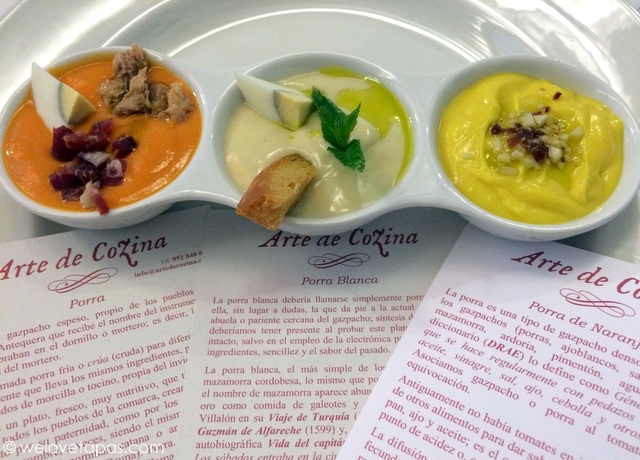Light, cool and refreshing in the hot summer weather, gazpacho, the cold tomato soup of southern Spain, is nowadays well-known all over the world. It’s one of a family of tomato based cold soups that includes salmorejo and porra, as well as other local varieties, but the origins of these dishes actually goes back to before tomatoes and peppers came to Spain from the New World, and even before the other common Spanish cold soup ajoblanco, made with garlic and almonds (which came to Spain with the Moors).
 gazpacho
gazpacho
In early mediaeval times the Spanish are known to have made a soup of water, dry bread, olive oil, garlic and vinegar, which probably went back to Roman times, as all of these were important elements of Roman cuisine. Leftover vegetables and, if you were lucky, meat or fish, were added to the mixture, which was mashed up to make a paste. In Moorish times peeled, blanched crushed almonds became a major ingredient, resulting in a thick, creamy white soup that was an early form of today’s ajoblanco, still strongly associated with the last of their strongholds in Granada and Malaga.
 ajoblanco
ajoblanco
Tomatoes (and peppers) began to appear in cold soups after these arrived from the Americas in the early 16th century. Because Seville had the monopoly of the trade, and tomatoes thrived in the soil and climate of the Guadalquivir valley (Los Palacios tomatoes are almost legendary for their taste and size), these new tomato based soups first developed in this part of Andalucia, and were not well known or highly regarded elsewhere until the 19th century.
 salmorejo
salmorejo
The terms used for the different varieties depend on how thick the soup is, and the extra ingredients that are used, and are commonly associated with different localities. Gazpacho, from Seville, normally adds more vegetable ingredients, particularly cucumber, peppers and onions, but less bread and olive oil, which results in a thinner mix that is usually drunk rather than spooned. It’s often garnished with croutons and chopped cucumber and pepper.
Salmorejo, the Cordobes tomato soup has more olive oil and breadcrumbs than gazpacho, and is thicker and creamier. It’s often used as a sauce (one of my favourite tapas is a carpaccio of salt cod topped with salmorejo), and may have a wide range of extra ingredients, such as beetroot, melon and avocados. In Úbeda I even came across a variety for the gluten intolerant that replaced bread with green apples – and very tasty it was too. The traditional garnish is a quartered hard-boiled egg and chopped ham.
 porra
porra
Porra (literally “club”, and I’ve seen it translated that way on a menu) is from the central part of Andalucia around Antequera, and is probably named for the mortar and pestle used to grind up the ingredients. With more breadcrumbs and red and green peppers it’s the thickest of all. Tuna is a popular garnish.